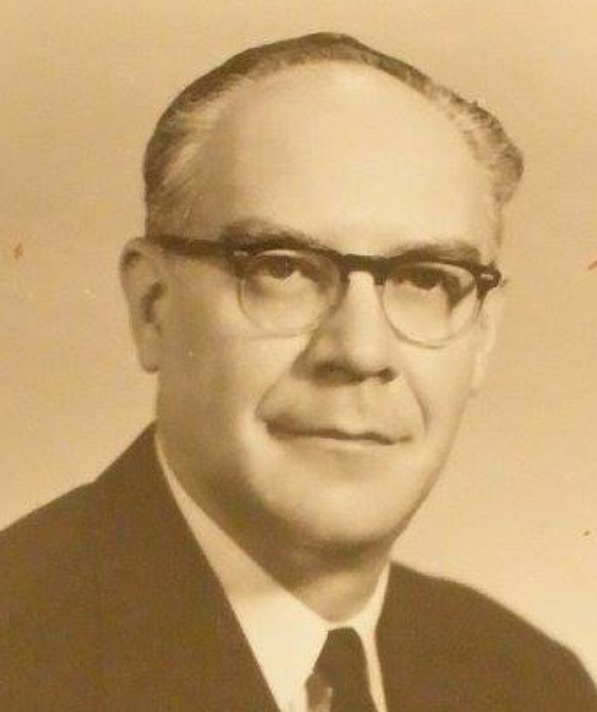Etler's earlier compositions exhibit a harmonic vocabulary and instrumental treatment resembling that of Bartók and Copland, with occasional flights into jazz. After his remarkable Quintet for Brass Instruments (1963) he abandoned his earlier style, experimented with serial procedures, and began to give greater prominence to timbral and textural elements. He used free rhythms, frequently interspersed with sharp, often jazzy accents, and strong dissonance, combined with sophisticated, multi-metric background textures. In spite of these doubtless self-conscious explorations, Etler's music never became academic, and never lost its stubborn aggressiveness and sensuous vitality.
- The first three movements all end with a single voice. Movement I concludes with a ppp trill in the 2nd trumpet. Movement II ends with the horn statement of the three "dots" of the S.O.S. theme. Movement III ends with the first trumpet playing a pianisissimo decrescendo. The fourth movement ends in one of the rare total homo-phonic statements of the S.O.S. theme - drawing even more attention to the conclusion.
- Frequently, the music does not reflect the written meter and alludes to an alternate meter, much like the distorted reality in the artworks of of Dali and Escher. Like chromaticism, this may have been designed to disorient the listener.
- Etler uses extended techniques (flutter tongue, half-valve, mutes) quite effectively, without over-using them.
- Etler's rhythmic language is complex, and seems to be one of the central forces of the piece.
- Like many modern composers, Etler utilized dissonant harmony, angular melodic material, and push the boundaries of range of the instruments, but to an effective end.
- As I mentioned, there was a (very believable) rumor that the reason this piece sounds so angry and utilizes Morse Code is that Etler's son died in the Korean War and was a radio operator. It's a fantastic story, but totally untrue, as this transcript of an email interchange between myself and Etler's grandson, Jim, confirms:
I am the grandson of Alvin Etler and I came across your blog mentioning him. I have a professional picture of him if you would like that i can e-mail to you. I am actually surprised there are no pictures of him on the web anywhere at all. Drop me a line if interested.Jim,
..... ..... ..... ..... ..... ..... ..... ..... ..... ..... ..... ..... ..... ..... ..... ..... ..... ....
Jim,
One thing I wanted to clear up - Alvin's Brass Quintet, a work I make all my students study, is for many reasons remarkable. Sometimes in the void of information, people invent details. Many have heard that part of that quintet, which seems riddled with quotations from morse code, alludes to Etlers son, "who died in the Korean war". I have never seen or heard any evidence to that fact, but it makes for a romantic story. Is there any truth to it? If not, do you know of any influences of morse code in his life/writing? Thank you for your insight.--- John
..... ..... ..... ..... ..... ..... ..... ..... ..... ..... ..... ..... ..... ..... ..... ..... ..... ....
lol funny, but I know that information started on a CD cover. Imaginemy uncle's surprise that he found out he was dead in the Korean war when he was only about 10 years old. I don't know how that started, but my uncle is alive and well on Cape Cod. It has become a big family joke. That piece you are talking about with the morse code, it is "S.O.S." Another unknown fact on my grandfather is that he used to ghost-write for commercials and the like. He told my uncle that he wrote the theme song to the 1950's childrens show "The Pinky Lee Show". I wondered why he would have done that until I looked it up on YouTube and saw that the show was sponsored by Tootsie Roll. That theme song shows his humor. From what my mother says he had a great sense of humor. He was also able to tap out 3 different rhythms at once, one on his left foot, another on his right and then a third on his hands. Its hard to do, I know I have tried and its pretty much impossible.
Take care, Jim Etler
Check out the clip below of an episode of the Pinky Lee show to hear Etler's Silly Song which was the theme song for the Pinky Lee show:

1 comment:
Is there any evidence of Etler playing or knowing percussion? Reading the quote from his grandson...
"He was also able to tap out 3 different rhythms at once, one on his left foot, another on his right and then a third on his hands. Its hard to do, I know I have tried and its pretty much impossible."
...This makes me think of a drum set player because they are doing rhythms with each foot and hand. I also think that any percussion training would be great inspiration for his use of rhythm. I'm not saying, though, that only percussionists are capable of rhythm.
Post a Comment